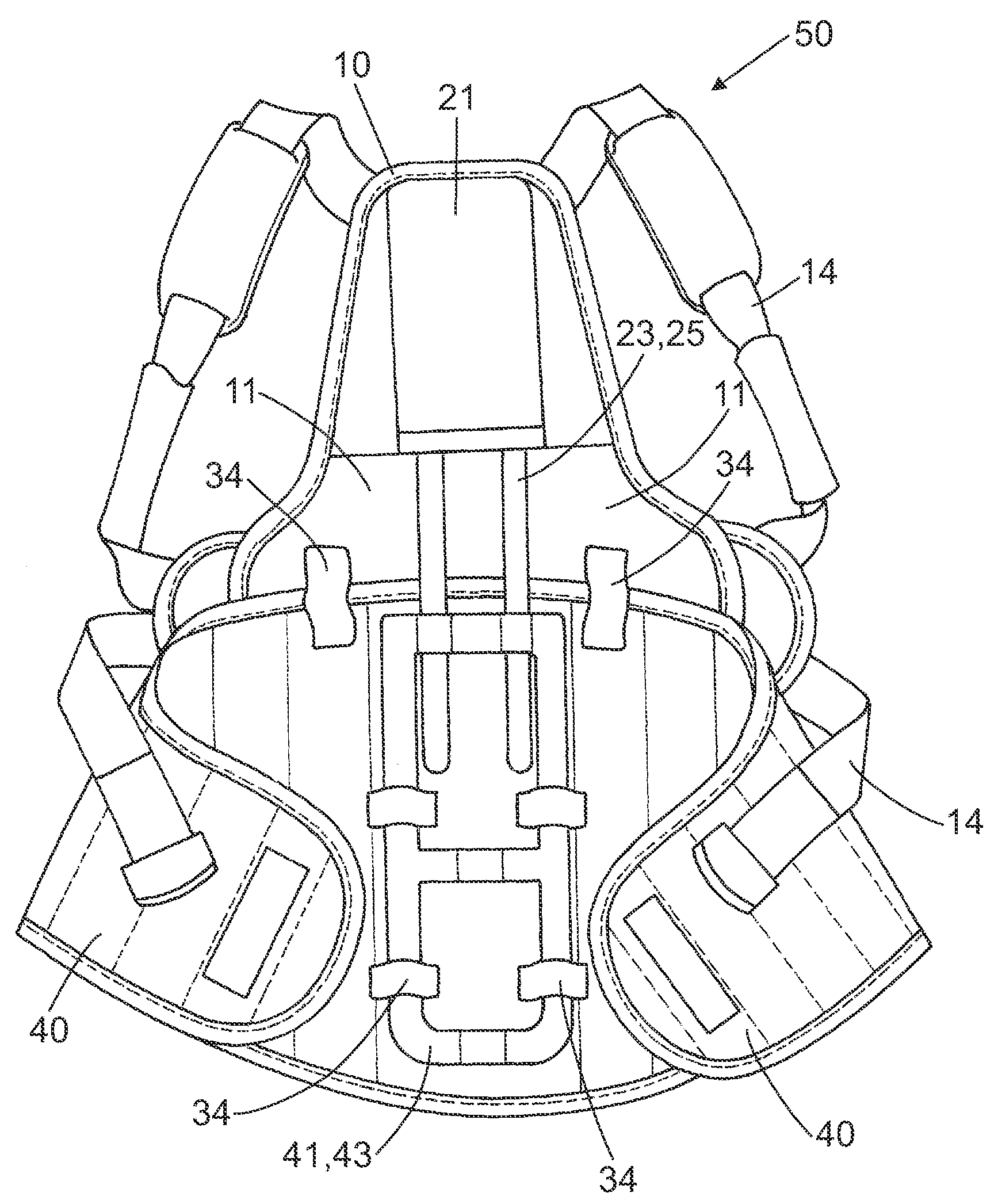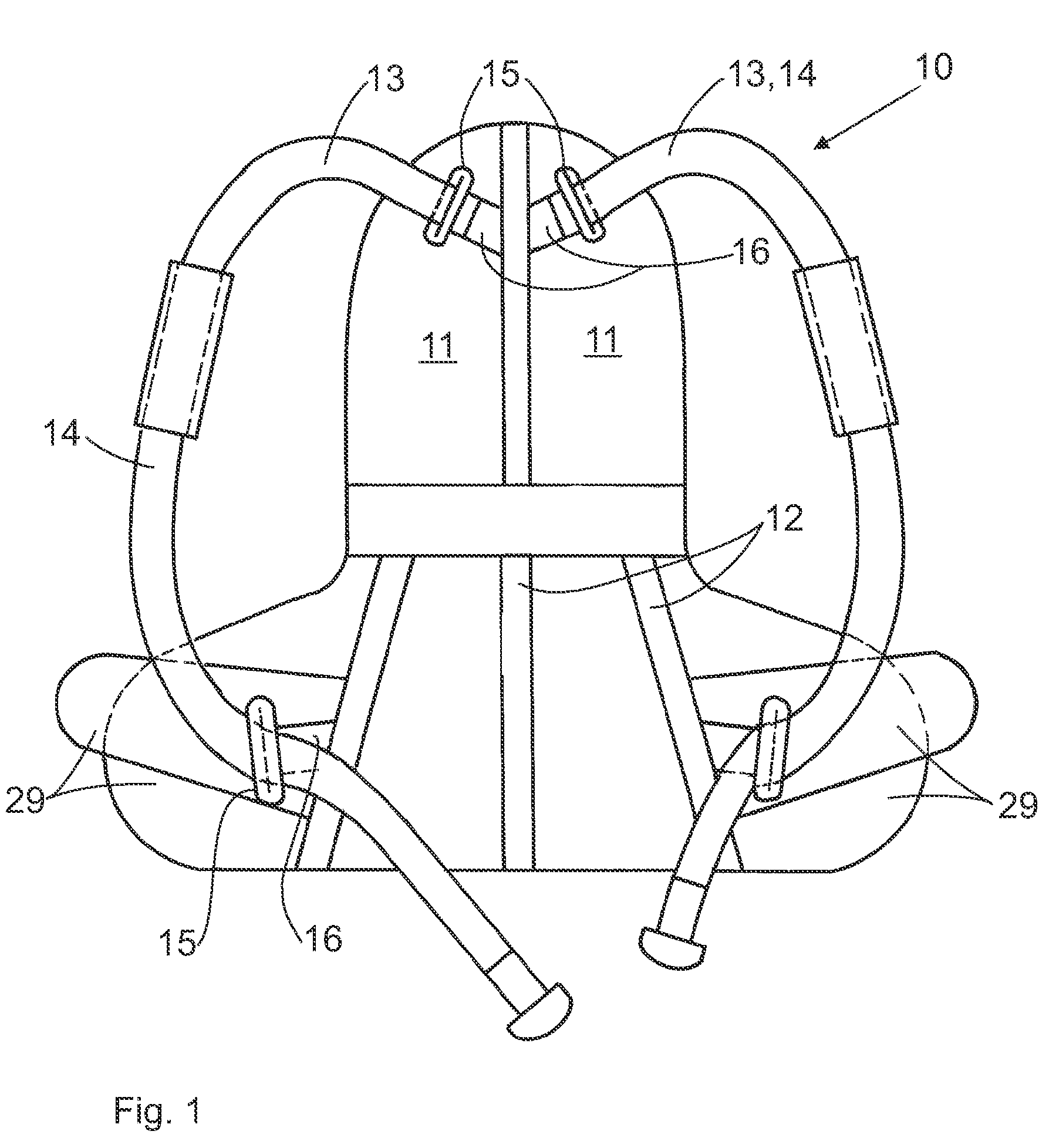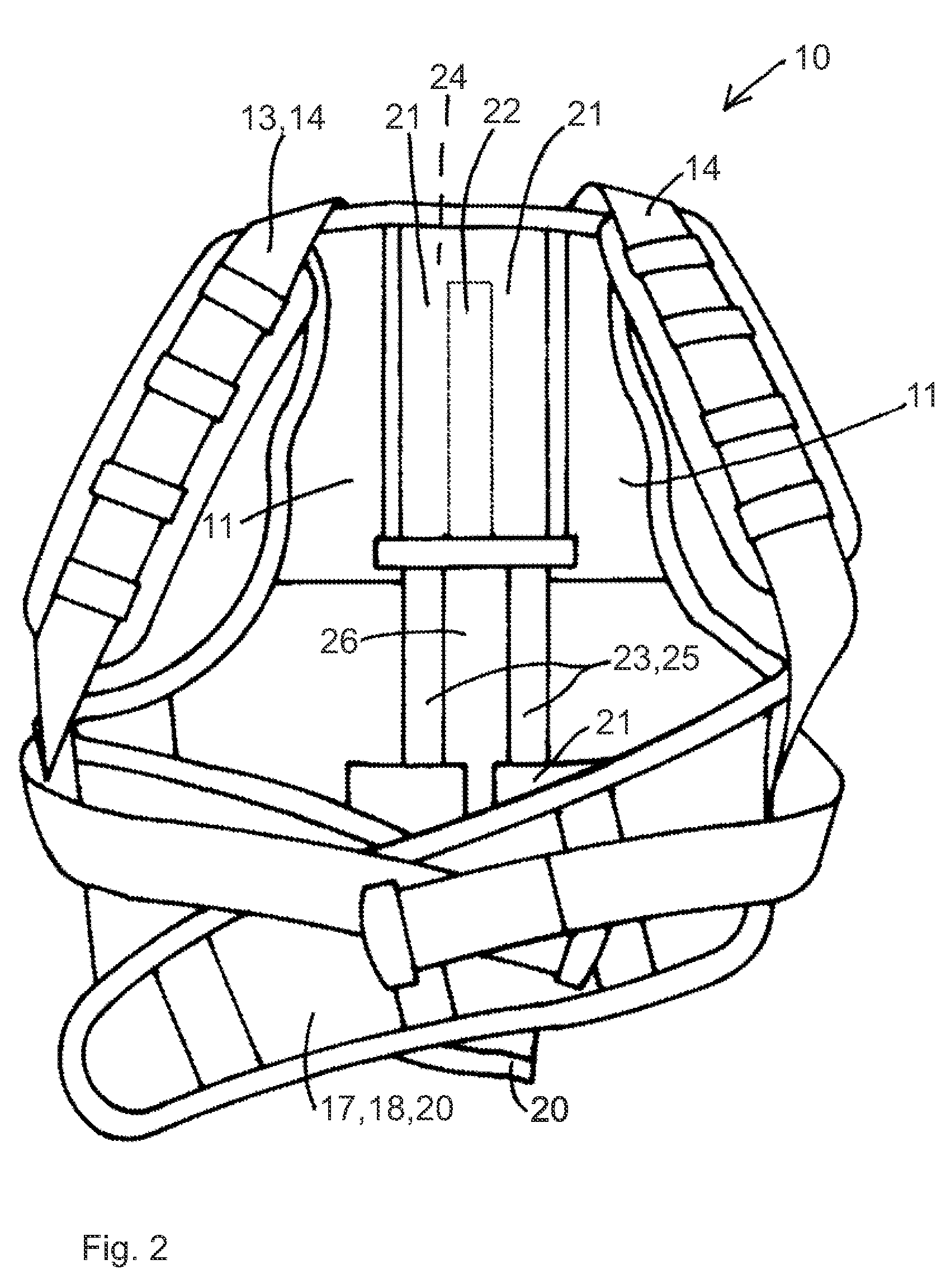Spinal orthotic devices
a technology of orthotics and supporting components, applied in the field of spinal orthotics, can solve the problem that spinal orthotics cannot make use of all elements of the modular system, and achieve the effect of increasing or decreasing the support properties
- Summary
- Abstract
- Description
- Claims
- Application Information
AI Technical Summary
Benefits of technology
Problems solved by technology
Method used
Image
Examples
Embodiment Construction
[0053]FIG. 1 shows an inventive thoracic spinal orthotic device 10, as seen in a view from the rear. The triangular posterior part 11 is shown with very rounded corners and also with stripes 12 in the form of cloth strips or parts of a hook-and-loop fastener (also called VELCRO-type closure parts). This posterior part 11 is designed to be in symmetry with the spine and / or a vertical line. On the cranial end of the posterior part 11 two inelastic belts 14 of the shoulder belt system 13 are arranged in the area of the spine. Belt holders 15 consisting essentially of a closed curved plastic part are used here. These belt holders 15 are attached to the posterior part 11 by elastic bands 16. The elastic bands 16 run diagonally away from the spine, with the bands arranged in an ascending pattern to the shoulder. The inelastic belts 14 of the shoulder belt system 13 are arranged on the belt holders 15. These run toward the lower belt holders 15 which are also arranged on the posterior part...
PUM
 Login to View More
Login to View More Abstract
Description
Claims
Application Information
 Login to View More
Login to View More - R&D
- Intellectual Property
- Life Sciences
- Materials
- Tech Scout
- Unparalleled Data Quality
- Higher Quality Content
- 60% Fewer Hallucinations
Browse by: Latest US Patents, China's latest patents, Technical Efficacy Thesaurus, Application Domain, Technology Topic, Popular Technical Reports.
© 2025 PatSnap. All rights reserved.Legal|Privacy policy|Modern Slavery Act Transparency Statement|Sitemap|About US| Contact US: help@patsnap.com



